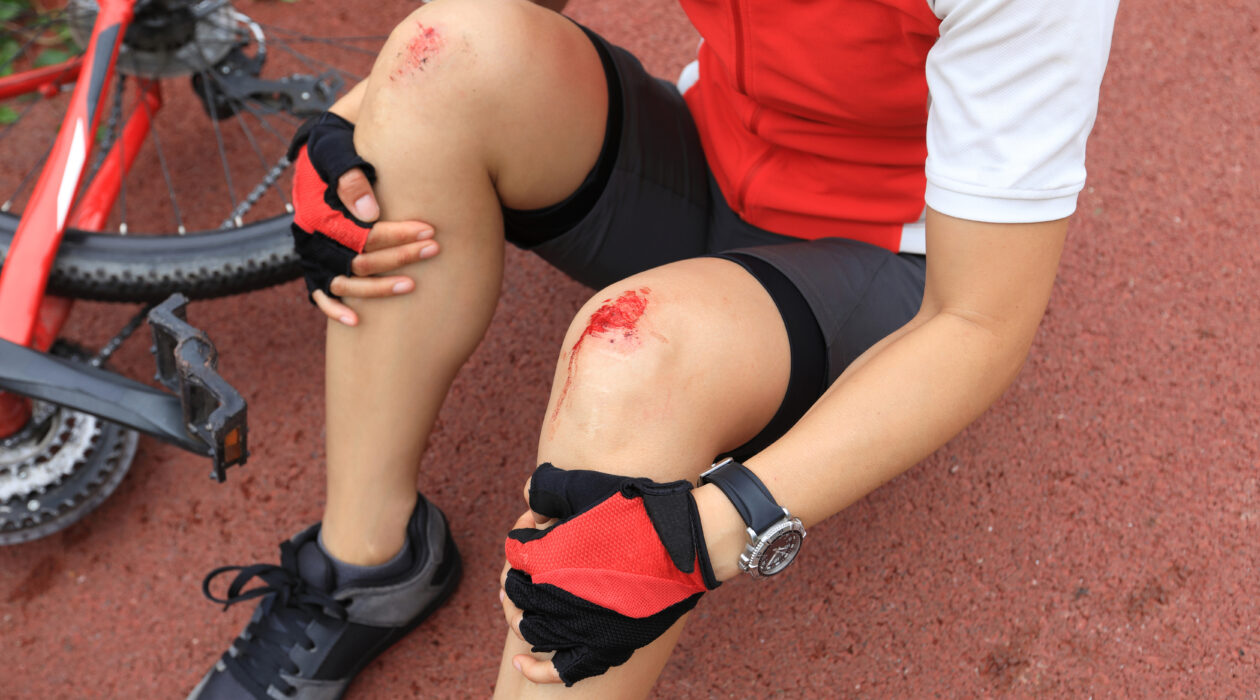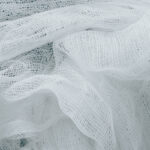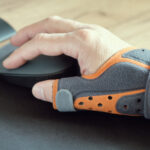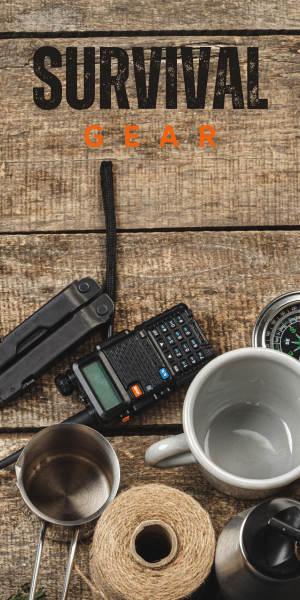Turf burn is a common injury encountered in sports activities, especially those played on artificial turf or grass. This type of injury occurs when the skin scrapes against the turf surface, resulting in an abrasion that is often painful and raw. The prevalence of turf burn is particularly high in sports like football, soccer, and rugby, where falls and slides are frequent. These injuries are more common on artificial turf, as its harder and less forgiving surface tends to be more abrasive than natural grass.
When an athlete experiences a turf burn, the outer layer of the skin gets rubbed away, exposing the sensitive layers beneath. This not only causes immediate pain but also makes the area susceptible to infections if not properly treated. The term ‘turf burn’ accurately captures the burning sensation that accompanies these abrasions. While generally not considered a severe injury, turf burns can be quite uncomfortable and may hinder an athlete’s performance if not cared for correctly.
The rise in the use of artificial turf in sports arenas has led to an increased incidence of turf burns, making it a notable concern for athletes, coaches, and sports medical professionals. Understanding the nature of turf burns and the best practices for treatment and prevention is essential in the world of competitive sports.
Understanding Turf Burn
Turf burn is a type of skin abrasion that occurs when the skin forcefully rubs or slides across the surface of artificial turf or grass. Unlike thermal burns caused by heat, turf burns are friction burns resulting from the physical scraping of the skin against a rough surface. This friction generates enough heat and force to remove the top layer of the skin, leading to an injury that resembles a rug burn.
The primary cause of turf burn is the abrasive interaction between the skin and the turf, often exacerbated in sports activities involving high-speed falls or slides. Sports like football, soccer, and rugby, where athletes frequently dive or slide across the ground, see a higher incidence of these injuries. Artificial turf, with its coarse and unyielding texture, is particularly notorious for causing more severe turf burns compared to natural grass.
Symptoms of turf burn are quite distinct and include:
- Red, Raw Skin: The most immediate and visible symptom is the appearance of red, raw skin where the outer layer has been scraped off.
- Pain and Burning Sensation: The exposed nerve endings in the skin result in a stinging or burning sensation, which can be quite intense depending on the severity of the burn.
- Bleeding or Weeping: In more severe cases, the abrasion may bleed or weep clear fluid, indicating damage to deeper layers of the skin.
- Swelling and Tenderness: The affected area may become swollen and tender to the touch.
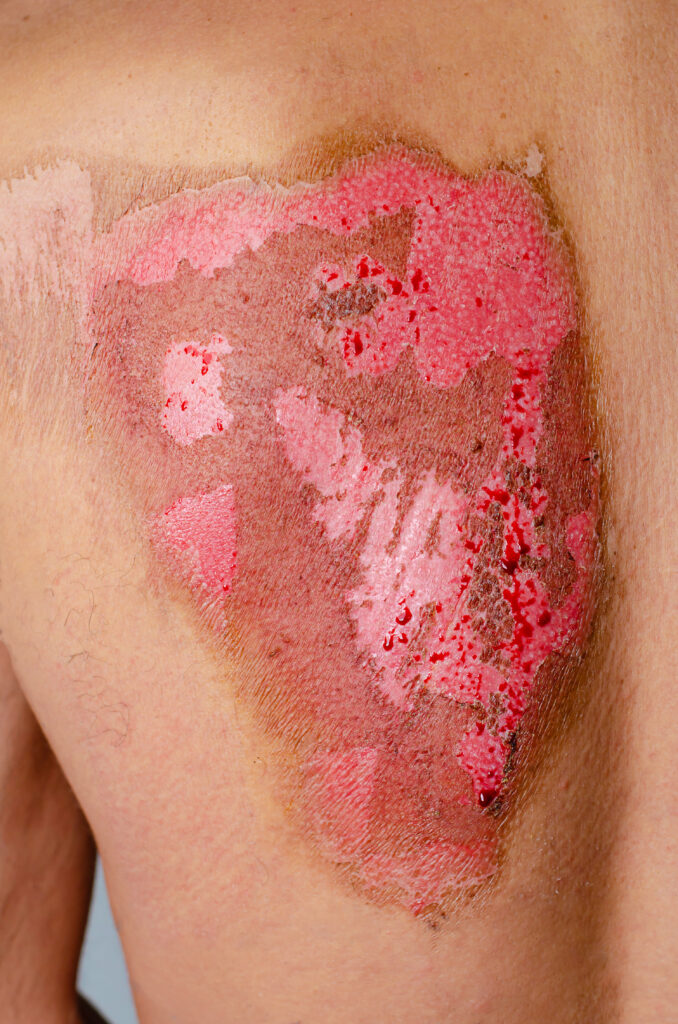
Diagnosing turf burn is generally straightforward and based on the visible symptoms and the patient’s history of recent activity. Medical professionals will look for the characteristic appearance of the wound and ask about recent participation in sports or activities that could lead to such an injury. In most cases, turf burns can be managed with basic first aid and do not require extensive medical intervention unless there are signs of infection or the wound is unusually deep.
Treatment of Turf Burn
Turf burn, while painful, can usually be treated effectively at home with proper first aid and care. Here’s a step-by-step guide to treating turf burn:
- Immediate Cleaning: As soon as the turf burn occurs, gently clean the area with lukewarm water to remove any debris or particles from the wound. Avoid using hydrogen peroxide or iodine as they can irritate the wound. Instead, use a mild soap if necessary.
- Disinfecting the Wound: After cleaning, apply an antiseptic solution or cream to the area to prevent infection. Products containing benzalkonium chloride or a mild iodine solution are effective. Be gentle to avoid further irritation.
- Covering the Wound: Use a sterile, non-stick gauze or a bandage to cover the turf burn. This protects the wound from further injury and contamination. Ensure the dressing is not too tight, allowing the wound to breathe.
- Pain Management: If the turf burn is particularly painful, over-the-counter pain relievers like ibuprofen or acetaminophen can help reduce discomfort.
- Monitoring for Infection: Keep an eye on the wound for signs of infection, such as increased redness, swelling, warmth, or pus. If any of these symptoms occur, seek medical attention.
- Changing Dressings Regularly: Change the dressing at least once a day or whenever it becomes wet or dirty. Each time, gently clean the area and apply a new antiseptic before re-dressing.
- Allowing the Wound to Heal: Avoid activities that could aggravate the wound until it has healed significantly. Keep the area dry and avoid picking at any scabs that form, as this can delay healing and increase the risk of scarring.
- Moisturizing: Once the wound starts to heal and scabs form, you can apply a fragrance-free moisturizer to prevent drying and cracking.
By following these steps, most turf burns will heal within a week or two, depending on their severity. However, if the wound shows no signs of healing or worsens, it’s important to consult a healthcare professional.
Healing and Recovery from Turf Burn
The healing process for turf burn typically involves a series of stages, starting with the initial pain and rawness, followed by gradual healing and skin regeneration. Initially, the wound will appear red and raw, and it may weep fluid. Over the next few days, the body’s natural healing mechanisms kick in, and you should start to see signs of healing.
During the healing process, it’s crucial to monitor the wound for any signs of infection. Indicators include increased redness, swelling, warmth around the area, pus, or a fever. If any of these symptoms are observed, it’s important to seek medical attention promptly, as infections can hinder the healing process and may require antibiotic treatment.
The turf burn should start to form a scab as it heals, which is a natural part of the healing process and should not be picked or removed, as this can lead to scarring or re-injury. Keeping the wound clean and properly dressed helps to protect it as it heals.
Most turf burns heal within one to two weeks, depending on their severity. However, deeper or more severe burns may take longer and should be monitored closely. If a turf burn is not showing signs of improvement within a few days, or if there are any concerns about the wound, it is advisable to consult a healthcare professional for further assessment and guidance.
Throughout the recovery period, it’s important to avoid activities that could aggravate the wound and to maintain good hygiene practices to support the healing process. With proper care and attention, most individuals recover from turf burns without long-term effects.
Preventive Measures in Different Sports
Preventing turf burns is particularly important in sports where athletes are prone to falls and slides on artificial turf or grass. Each sport may require specific preventive measures:
Football and Soccer: Players in these sports often experience falls and slides. Wearing long-sleeved jerseys and pants can provide an extra layer of protection against turf burns. Specialized padding, like elbow and knee pads, can also be worn to protect vulnerable areas.
Rugby: Similar to football, rugby players are at risk due to the nature of the sport. Wearing protective clothing that covers the arms and legs is advisable. Rugby players can also benefit from padded clothing that offers additional protection without restricting movement.
Field Hockey and Lacrosse: Players should consider wearing protective gear like shin guards and padded shorts. These not only protect against turf burns but also from impacts and injuries common in these sports.
Track and Field: For athletes in track events, particularly sprinters who might fall at high speeds, wearing fitted clothing that covers the legs and arms can help reduce the risk of turf burns.
Cheerleading and Gymnastics: Participants in these activities should wear appropriate clothing that covers as much skin as possible. Mats or other protective surfaces can also be used during practice to minimize the risk of turf burns.
FAQ :
What is turf burn?
Turf burn is a type of skin abrasion commonly experienced in sports played on artificial turf or grass. It occurs when the skin scrapes against the turf, resulting in a painful, raw wound. This friction burn exposes the sensitive layers of skin, causing discomfort and a risk of infection.
How long does turf burn take to heal?
The healing time for turf burn varies but typically takes about one to two weeks. The duration depends on the burn’s severity and the care provided. Keeping the wound clean, properly dressed, and monitoring for signs of infection can expedite healing. Severe cases may take longer to heal.
Can you put Vaseline on a turf burn?
Yes, Vaseline (petroleum jelly) can be applied to a turf burn. It helps keep the wound moist, which can aid in the healing process. However, it should only be applied to a clean wound and covered with a sterile bandage to prevent infection and dirt from entering the wound.
Is a turf burn leaking?
A turf burn may leak a clear fluid, especially in the initial stages of healing. This fluid, known as exudate, is part of the body’s natural healing process. It’s important to keep the wound clean and properly dressed. If the fluid is pus-like or the wound shows signs of infection, seek medical attention.
In the end :
Turf burns are a common but manageable concern in various sports, particularly those involving artificial turf. Understanding the nature of these injuries, effective treatment methods, and the importance of infection prevention are key to managing turf burns. Moreover, adopting sport-specific preventive measures can significantly reduce the risk of these injuries. By wearing appropriate protective clothing and using protective gear, athletes can enjoy their sports with a reduced risk of sustaining painful turf burns. Awareness and proactive measures are the best strategies to ensure safety and enjoyment in sports activities.

